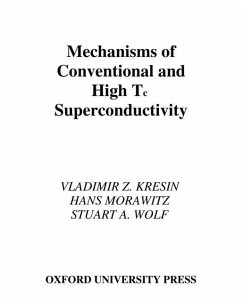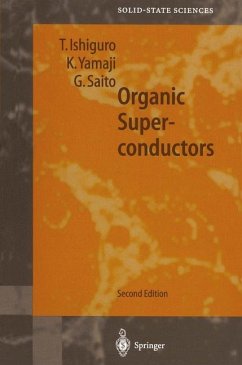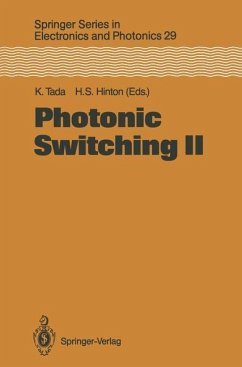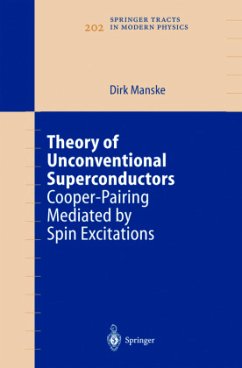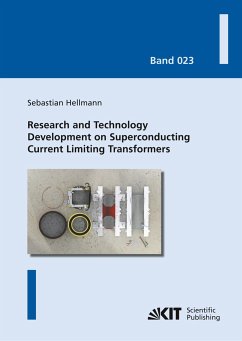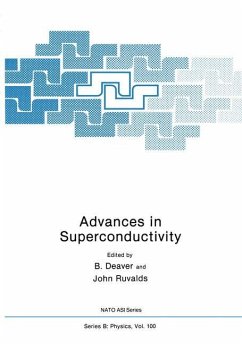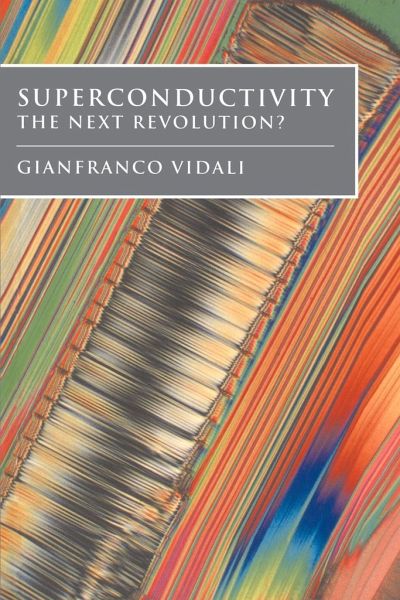
Superconductivity
The Next Revolution?
Versandkostenfrei!
Versandfertig in 1-2 Wochen
53,99 €
inkl. MwSt.

PAYBACK Punkte
27 °P sammeln!
In 1987 scientists and engineers were seized with excitement at the discovery of 'high temperature superconductors': these new materials become superconducting at temperatures four times higher than any previously known superconductor. Suddenly all kinds of applications of superconductivity, from magnetically levitated trains to lossless power lines, became possible. As a result of the intense media coverage of these discoveries, superconductivity has become almost a household word, although most people have only a vague idea of what it is. In this book Professor Vidali describes in plain, non...
In 1987 scientists and engineers were seized with excitement at the discovery of 'high temperature superconductors': these new materials become superconducting at temperatures four times higher than any previously known superconductor. Suddenly all kinds of applications of superconductivity, from magnetically levitated trains to lossless power lines, became possible. As a result of the intense media coverage of these discoveries, superconductivity has become almost a household word, although most people have only a vague idea of what it is. In this book Professor Vidali describes in plain, non-technical terms how conventional superconductivity was discovered 80 years ago, why it took nearly 50 years to understand it, and the physical explanation of why it exists. He chronicles the developments that led up to the discovery of high temperature superconducting materials, and describes the excitement generated by announcements of the new discoveries in 1987 at a scientific conference that became known as the 'Woodstock of physics'. Finally, he speculates on possible future applications of these new materials.
Table of contents:
1. Introduction and overview; 2. Physics at Leiden and the liquefaction of helium; 3. The discovery of superconductivity; 4. How electrical currents flow; 5. A breakthrough: the Meissner effect; 6. Quantum mechanics and superconductivity; 7. Superconductivity explained; 8. Superconductivity-based technology; 9. High temperature superconductivity; 10. Technological applications of the new materials; Conclusion.
In this short non-technical book, Professor Vidali describes the excitement that has gripped the world of science ever since the discovery of the new high temperature superconducting materials in 1987.
A popular account of the discovery of the new high temperature superconducting materials.
Table of contents:
1. Introduction and overview; 2. Physics at Leiden and the liquefaction of helium; 3. The discovery of superconductivity; 4. How electrical currents flow; 5. A breakthrough: the Meissner effect; 6. Quantum mechanics and superconductivity; 7. Superconductivity explained; 8. Superconductivity-based technology; 9. High temperature superconductivity; 10. Technological applications of the new materials; Conclusion.
In this short non-technical book, Professor Vidali describes the excitement that has gripped the world of science ever since the discovery of the new high temperature superconducting materials in 1987.
A popular account of the discovery of the new high temperature superconducting materials.






